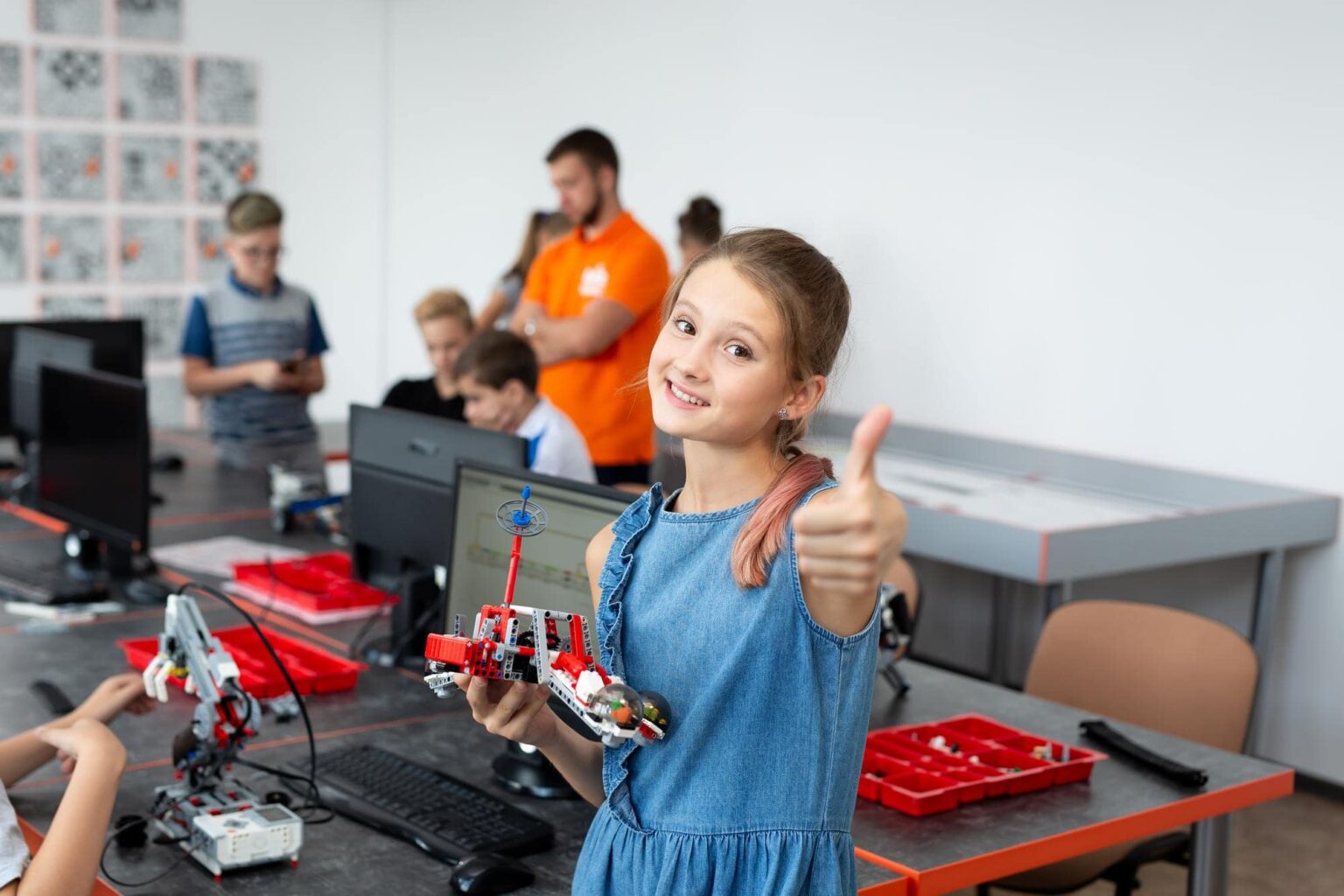STEM (Science, Technology, Engineering, and Mathematics) education plays a crucial role in preparing students for the challenges and opportunities of the future. Integrating robotics into STEM education can enhance the learning experience and help develop future-ready skills. Here’s how STEM education and robotics work together to build essential skills:
- Problem-solving and Critical Thinking: Robotics activities require students to analyze problems, design solutions, and debug issues that arise during the building and programming process. By engaging in hands-on robotics projects, students develop critical thinking skills and learn how to approach complex problems systematically. They gain experience in breaking down problems into smaller components, identifying patterns, and finding innovative solutions.
- Collaboration and Teamwork: Robotics projects often involve teamwork, where students work together to design, build, and program robots. Collaborative tasks encourage communication, cooperation, and the division of labor. Students learn how to work effectively in teams, share responsibilities, resolve conflicts, and leverage each team member’s strengths. These collaborative skills are essential for success in many STEM fields and real-world scenarios.
- Creativity and Innovation: Robotics provides a platform for students to unleash their creativity and explore innovative ideas. As they design and build robots, students can experiment with different configurations, mechanisms, and programming techniques. They learn to think outside the box, take risks, and come up with unique solutions to challenges. Robotics nurtures creativity by allowing students to see their ideas come to life and witness the tangible outcomes of their efforts.
- Computational Thinking and Programming Skills: Robotics involves programming robots to perform specific tasks or follow certain behaviors. Students learn fundamental programming concepts such as sequencing, loops, conditionals, and variables. They gain experience in coding and understand how to translate their ideas into commands that robots can execute. Computational thinking skills developed through robotics lay a strong foundation for future endeavors in programming and computer science.
- Engineering Design Process: Robotics activities follow the engineering design process, where students define problems, brainstorm ideas, design solutions, build prototypes, test them, and iterate. By engaging in this iterative process, students learn to plan, design, and refine their creations. They develop skills in measurement, precision, and attention to detail. The engineering design process taught through robotics empowers students to apply a systematic approach to problem-solving across various disciplines.
- Persistence and Resilience: Robotics projects often present challenges and setbacks that require perseverance. Students learn to embrace failure as an opportunity to learn and improve. They develop resilience, persistence, and a growth mindset as they tackle problems, troubleshoot errors, and persevere until they achieve their desired outcomes. These qualities are crucial for success in STEM fields, where perseverance and resilience are necessary to overcome obstacles and drive innovation.
- Real-world Applications: Robotics provides a tangible connection between theoretical concepts and their real-world applications. By engaging in robotics projects, students see how STEM principles are applied in various fields such as manufacturing, automation, healthcare, and space exploration. This practical understanding enhances their motivation and interest in STEM subjects and helps them connect classroom learning to real-world contexts.
- Future-ready Skills: Robotics education equips students with essential future-ready skills. In an increasingly technology-driven world, skills such as problem-solving, critical thinking, collaboration, creativity, and computational thinking are highly sought after. Robotics education prepares students for careers in STEM fields, where these skills are in high demand. It also nurtures an entrepreneurial mindset, fostering innovation, and empowering students to become future creators and leaders.
By integrating robotics into STEM education, students develop a strong foundation in STEM disciplines while also building essential 21st-century skills. Robotics education prepares them for the challenges and opportunities of an increasingly technologically advanced world, equipping them to thrive in the digital age.



